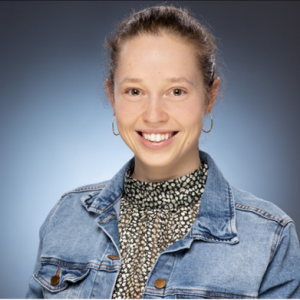Bionote

Paulina Englert (https://linktr.ee/penglert) is a third year PhD Student, working in the Environment Modeling group of Prof. Ana Meijide at the University of Bonn. She is conducting her experiments on Nitrous Oxide emissions from croplands at the experimental farm of the University of Göttingen, where an Eddy Covariance flux tower was installed. In 2025 she was a visiting researcher in the group of Prof. Nina Buchmann at ETH Zürich for three months. She finished her Master in Crop Sciences at the University of Göttingen in 2022 and her Bachelor in Organic Agriculture at the University of Kassel in 2020.
Presentation Abstract
Nitrous Oxide (N2O) is one of the three most important greenhouse gases. Anthropogenic N2O emissions mainly arise from agricultural managed soils due to manure or fertilizer application. It is challenging to accurately quantifying N2O fluxes due to the high temporal and spatial variability. Commonly, N2O fluxes are estimated with manually operated chambers which cover only a small area and the labor-intensive measurements result in sparse temporal resolution. Only recently, the eddy covariance (EC) technique has become available for N2O measurements, providing non-intrusive spatially integrated flux data at high temporal resolution (half-hourly fluxes from 10 Hz raw data), which can give valuable insights in the underlying drivers when combined with high-resolution ancillary measurements like soil moisture.
In this video, we present our recent measurements from an EC flux tower installed in an agricultural field in central Germany (Reinshof) in 2022. Within the tower footprint, we additionally installed 8 manually operated chambers. The N2O flux measurements showed a large temporal variability across seasonal conditions and management activities. With the EC flux tower, we observed N2O peaks after fertilization, rainfall, freeze-thawing or tillage events on the field, which were not always captured by the chamber measurements. This highlights the advantages of the EC method regarding the quantification of N2O emissions. The EC measurements can help improving our understanding about the interactions of management practices and environmental conditions that lead to higher N2O emissions, which is the basis for developing climate-smart management practices.
Co-authors: Christian Markwitz (Göttingen, Bioclimatology), Mubaraq Olarewaju Abdulwahab (Rennes, INRAE), Nicholas Cowan (Edinburgh, UKCEH), Antonios Apostolakis (Göttingen, Agronomy), Nina Buchmann (Zürich, Grassland Sciences), Alexander Knohl (Göttingen, Bioclimatology), Stefan Siebert (Göttingen, Agronomy), Ana Meijide (Bonn, Environment Modeling)
This work was partially funded by the Deutsche Forschungsgemeinschaft (DFG, German Research Foundation) under Germany’s Excellence Strategy -EXC 2070 – 390732324.